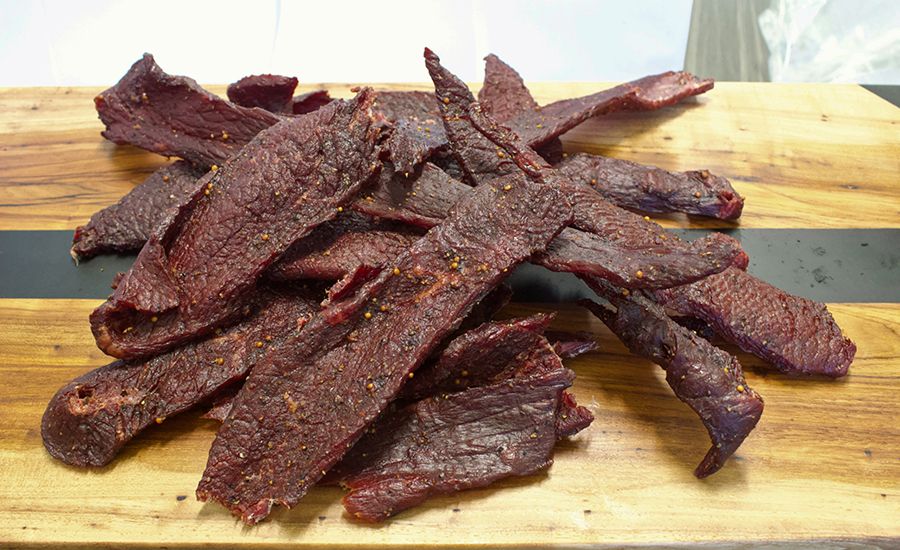Processor Profile: Junior's Smokehouse
Finding success through employee satisfaction
Texas-based Junior’s Smokehouse prioritizes both its employees and customers.

Opening image credit: GettyImages / skynesher / E+ / Getty Images Plus
El Campo, Texas-based Junior’s Smokehouse officially opened in 2005, but the business’s namesake began working with meat long before that. Gerhard Drechsler, director of business development, sat down with The National Provisioner to discuss Junior’s Smokehouse.
Drechsler said that Junior Herzik began as a rice farmer, but he eventually got into smoked meats after finding that rice was not lucrative enough.
After working with his son, Junior and his son-in-law then ventured into retail, opening their own store. Drechsler said that, after stopping at the retail store one day, a retail chain brought them on as a private-label supplier.
Junior’s Smokehouse had to later sell their retail storefront, though, due to demand.
“While producing for the initial private label customer, the company picked up new private label business, requiring two separate expansions, one for production capacity and the other for warehousing,” Drechsler said. “The plant now produces roughly 4,000,000 lbs of jerky annually between private label business and the Uncle Ervin’s brand.”
Junior’s Smokehouse does nationwide retail sales and a lot of private label, but they are just now venturing into their own brand, Uncle Ervin’s Premium Texas Jerky.

Though Junior’s Smokehouse frequently utilizes automation, they prefer to make the actual meat snacks by hand, emphasizing how important tradition is to them.
“We really try to keep that authentic product quality that Junior established 36 years ago. And he comes in and he tests our products,” Drechsler said. “Because that’s his legacy, and we have to honor that legacy.”
The business’s most popular products include their beef jerky and smoked sausages. “By marinating for 24 hours, hand hanging each slice, and processing in a very specific way, we create a jerky with a steak-like chew,” Drechsler said.
After noticing a lack of flavor variation in the jerky category, Junior’s Smokehouse set out to fulfill that hole in the market with its bold flavor meat snack offerings. This includes the smokehouse’s new product, a shelf-stable snack stick.
“We’ve came out with an amazing snack stick product, and we’re going to mimic our jerky flavors.” This product is expected to roll out in Q1 2024.
The San Antonio Express-News wrote an article in May 2023 titled “Battle of the Beef Sticks: Who makes the best meat snack for your next road trip?”, recognizing Junior’s Smokehouse formulation for Best Overall Beef Stick and Best Texas Beef Stick.

Junior’s Smokehouse now has to expand once again due to growth in sales. “We just completed a warehouse expansion, and now we’ll start designing another expansion for production area,” Drechsler said.
Looking at the Junior’s Smokehouse business model, Drechsler said that they prioritize satisfaction of both customers and employees.
“We have two key groups that we have to focus on. Our customers, they have to get world-class product. And we have a no-questions-asked guarantee on our product,” he said. “When you make your customers happy, and you keep your employees happy, our theory is then you therefore are keeping ownership happy. Because if your customers love you and your employees love you, how could you be going wrong?”
An essential component of Junior’s Smokehouse is their company culture, called High Expectation Casual, which prioritizes the well-being of those they employ in conjunction with their performance standards. This company culture includes not only emotional well-being prioritization, but a guaranteed 40-hour weekly pay, regardless of the hours worked, in addition to bonuses for being consistently present.
The Junior’s Smokehouse leadership also regularly meets with its employees to address any issues or concerns. “Most of their experiences are then taught through our World Class University, [where] we educate and coach others so they can develop competencies and expand their comfort zones,” Drechsler said.
Reengineering equipment to increase throughput is an important business component for Junior’s Smokehouse. These efforts are a part of what Drechsler calls the World Class model, which means his business constantly strives to improve.
Drechsler said the aspects of the smokehouse’s reengineering cycle include Spot, Thought, Vision, Action, Completion.
One example of Junior’s Smokehouse’s reengineering efforts - streamlining a bulk packaging process - happened shortly after Drechsler joined the business. This packaging process was reengineered once more when employees had a spat about a bag of jerky.
“Understanding what lay behind the argument led to critical observations that spurred another comprehensive reengineering, resulting in the packaging team more than doubling its throughput,” Drechsler said. “Over the next 60 days, this event created several other changes that resulted in six days of production being accomplished in just four.”
Looking for a reprint of this article?
From high-res PDFs to custom plaques, order your copy today!





